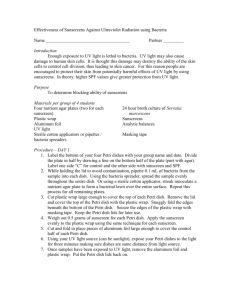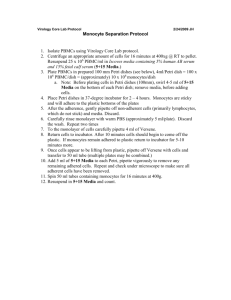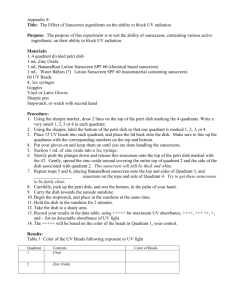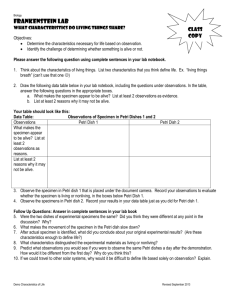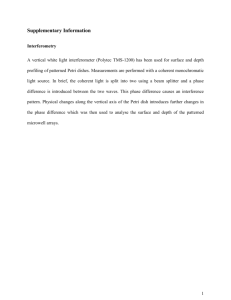Evaluating the Effectiveness of Sunscreens Experiment
advertisement
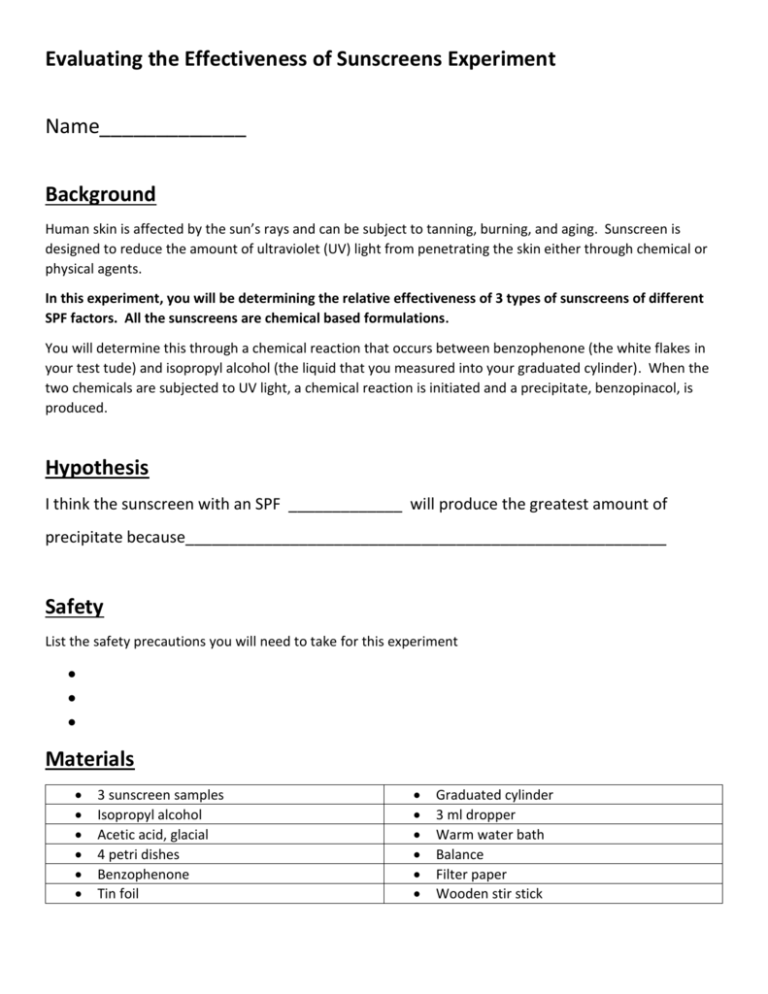
Evaluating the Effectiveness of Sunscreens Experiment Name_____________ Background Human skin is affected by the sun’s rays and can be subject to tanning, burning, and aging. Sunscreen is designed to reduce the amount of ultraviolet (UV) light from penetrating the skin either through chemical or physical agents. In this experiment, you will be determining the relative effectiveness of 3 types of sunscreens of different SPF factors. All the sunscreens are chemical based formulations . You will determine this through a chemical reaction that occurs between benzophenone (the white flakes in your test tude) and isopropyl alcohol (the liquid that you measured into your graduated cylinder). When the two chemicals are subjected to UV light, a chemical reaction is initiated and a precipitate, benzopinacol, is produced. Hypothesis I think the sunscreen with an SPF _____________ will produce the greatest amount of precipitate because_______________________________________________________ Safety List the safety precautions you will need to take for this experiment Materials 3 sunscreen samples Isopropyl alcohol Acetic acid, glacial 4 petri dishes Benzophenone Tin foil Graduated cylinder 3 ml dropper Warm water bath Balance Filter paper Wooden stir stick Evaluating the Effectiveness of Sunscreens Experiment Procedure 1. 2. 3. 4. 5. 6. 7. Line each petri dish with tin foil. Label the bottom of each petri dish with the SPF rating that is being tested. Add 10 ml of isopropyl alcohol to each tube. 3 grams of benzophenone are present in each test tube. Carefully dissolve the benzophenone by warning the tubes in a warm water bath. Have Mrs. Feddema add one drop of glacial acetic acid to each tube. Pour the dissolved contents of each test tube into the individual petri dishes. Coat the top half of 3 of your petri dishes with a thin layer of sunscreen. Ensure each dish is covered with a layer that is the same thickness. One of your petri dishes will not be coated with sunscreen, it will act as a control sample. Place the coated covers on the bottom halves. 8. Put the petri dishes outside on the back railing. They will be out for 2 to 2.5 hours. 9. The petri dishes will be brought in and allowed to cool in a dark location. 10. You will receive 4 sheets of filter paper, write Control, SPF 30, SPF 50 and SPF 60 on the filter papers. Each filter paper weighs 1g. 11. Carefully remove any solid benzopinacol precipitate from the petri dish onto the filter paper. Wash the solids collected on the filter paper using isopropyl alcohol with your dropper. Rinse the solids several times with the isopropyl alcohol. 12. There will be some remaining precipitate on the petri dish which will be removed using 10 ml of isopropyl alcohol stirred around in the petri dish. Filter the remaining product through the paper and set the filter paper and precipitate out to dry. 13. Once the filter paper and precipitate are completely dry, they can be weighed and recorded on your work sheet. 14. Insert a graph below using the data you have collected SPF vs. weight of benzopinacol. Variables List three variables that may affect the test Evaluating the Effectiveness of Sunscreens Experiment Analysis 1. Which sunscreen created the least weight of precipitate? 2. Therefore, which sunscreen SPF provided the greatest protection from UV light? 3. Do your results confirm your hypothesis? Explain why or why not 4. How has this experiment affected your opinion about sunscreen?
